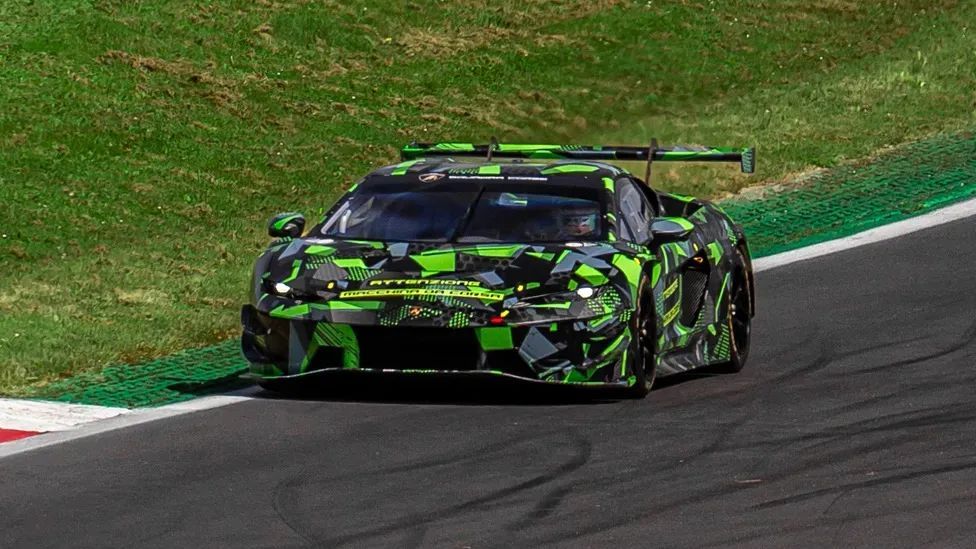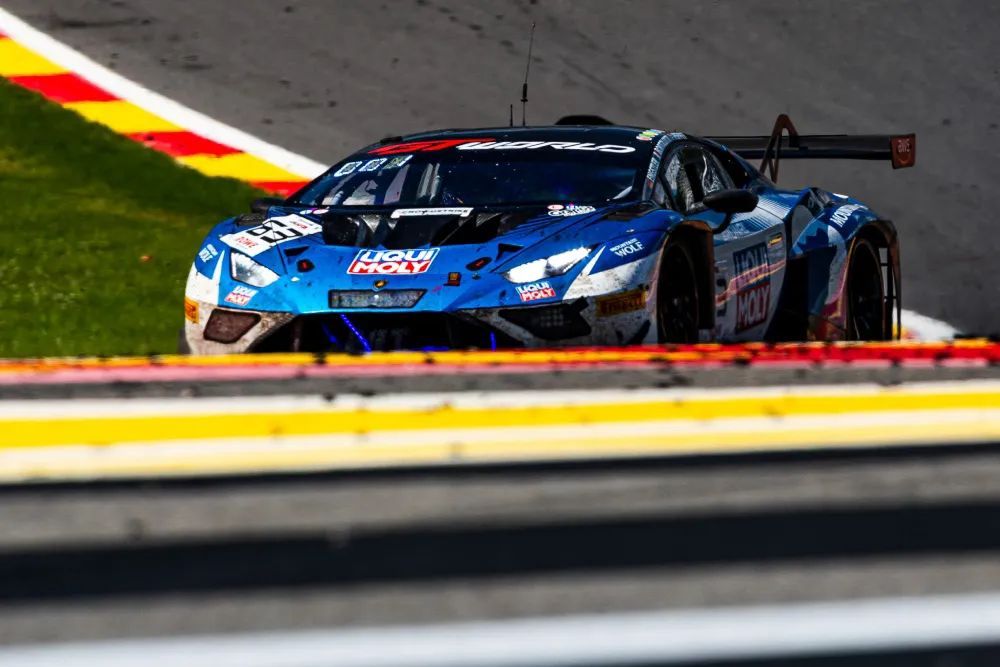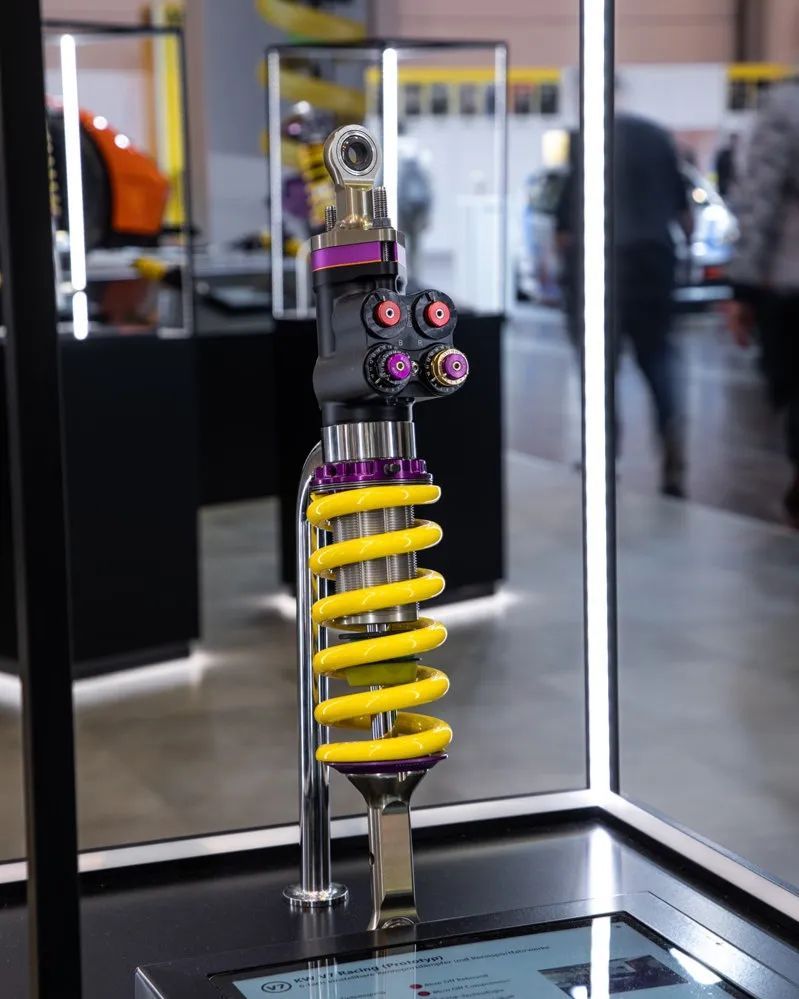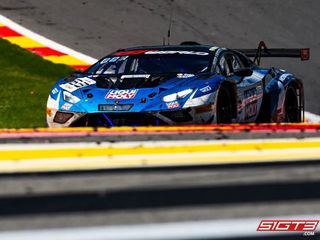Lamborghini Temerario GT3: Building on the legacy, opening a new chapter on the track
Racing News & Updates August 6
Under the spotlight at this year's Goodwood Festival of Speed, Lamborghini officially unveiled the all-new Temerario GT3 race car. This new car, tasked with continuing the brand's track record, has been highly anticipated since its inception. Its predecessor, the Huracan GT3, has already written a legendary chapter with its impressive achievements: one overall victory at the Spa 24 Hours, three class victories at the Daytona 24 Hours, two class victories at the Sebring 12 Hours, and two class victories at Petit Le Mans. Now, the baton has been passed to the Temerario GT3, carrying a weight that surpasses that of legend.

Lamborghini CEO Stephan Winkelmann was present at the Goodwood launch event to witness the new car's unveiling.
Development Progress: Precision Progress under a Tight Cycle
Development of the Temerario GT3 began in early 2024, a timeline rarely seen in the history of GT3 racing development. The car made its public debut at the Spa 24 Hours in late June of this year, but at that time, it had accumulated only six days of testing and just over 1,000 kilometers of mileage—meaning it still has some way to go before it achieves FIA GT3 technical homologation. The car we've seen so far is still in the pre-homologation testing phase. According to Lamborghini's engineering team, the car is scheduled to participate in centralized testing organized by IMSA in November to lay the groundwork for homologation.

The Temerario GT3 car during testing.
Lamborghini CTO Rouven Mohr stated in an interview that the January 2026 Daytona 24 Hours is not a realistic debut target for the new car, and the team prefers the March 2026 Sebring 12 Hours as its official starting point. Regarding production capacity planning, Lamborghini plans to produce 10 race cars by the end of this year (to meet a base production capacity requirement of 20 units over the next two years). The first batch of new cars will be supplied first to core customer teams with whom the brand maintains a deep technical partnership – a partnership demonstrated by GRT Racing's renewed overall victory at the 2025 Spa 24 Hours.

GRT Racing won the 2025 Spa 24 Hours with the Huracan GT3 EVO2.
Technological Innovation: Comprehensive Upgrades from Maintenance Efficiency to Driving Experience
Modular Design Leads a Maintenance Revolution
Although the Temerario GT3's chassis is reinforced from the production model, it represents a qualitative breakthrough in structural design. Compared to the previous model, the new car's front subframe, cockpit, and rear subframe are all detachable—a concept shared with the Ferrari 296 GT3 and a hallmark of the new generation of GT3 race cars. Furthermore, the front and rear aerodynamic panels feature a one-piece quick-release design, enabling rapid replacement in the event of a collision, significantly reducing repair time.
The floorpan design also embodies modularity: a four-segment structure consisting of two spoilers ahead of the front axle, a central main floorpan, and a rear diffuser further enhances serviceability, enabling technicians to quickly replace and adjust individual components.

Modular design has become the mainstream development direction of current GT3 racing cars.
Precise Tuning of Driving Forgiveness
The new generation of GT3 racing cars generally focuses on improving friendliness for "gentleman drivers," and the Temerario GT3 has also made significant efforts in this regard. The new car features a longer wheelbase and wider track, and is equipped with KW's newly developed V7 six-stage adjustable damping system. With a wide range of tuning options, it not only meets the ultimate handling needs of professional drivers, but also provides a more stable driving response for amateur drivers.
In addition, the new suspension system has been specifically optimized for the tire characteristics used in various GT3 series around the world. In theory, it is compatible with a wider range of slick tire brands and compounds, providing teams with greater flexibility in tire strategies across different events.

The KW V7 suspension system provides multi-dimensional tuning options for the car.
Groundbreaking Evolution of Aerodynamics and Power Unit
While the Huracan GT3 EVO2 has achieved perfection in braking and cornering performance, its aerodynamic adaptability still needs improvement. This is particularly true in following and overtaking situations. Due to the design characteristics of the naturally aspirated engine and the top air intake, the car's torque output differs significantly inside and outside the wake, requiring drivers to precisely time overtaking. Therefore, widening the aerodynamic operating window and reducing airflow sensitivity became core themes in the development of the Temerario GT3.
The key to solving this problem lies in its all-new power unit—a 4.0-liter twin-turbocharged V8 engine (internal codename L411). This is Lamborghini's first fully in-house developed engine in nearly a decade. Featuring a hot-vee layout and a flat-plane crankshaft, it boasts a redline of 10,000 rpm and peak power exceeding 800 horsepower.
To meet the demands of GT3 racing, engineers optimized the engine specifically: First, the cooling system was restructured. Since the race car doesn't require the hybrid components of a production model, the cooling circuitry was simplified, switching from a water-cooled system to an air-cooled solution more suited to track conditions. Second, to comply with Balance of Performance (BOP) regulations, power was limited to 500-600 horsepower, resulting in the installation of a downsized turbocharger supplied by BorgWarner.
This turbocharger layout not only theoretically improves the car's power output stability in the wake, but also broadens the engine's effective speed range—a significant benefit for gentlemen drivers. Notably, the new engine was designed from the outset to incorporate the torque sensor system widely used in IMSA and WEC racing, providing more convenient technical support for the team's powertrain tuning.

The L411 engine represents Lamborghini's latest technological advancements in racing power units.
Power is transmitted via a drive shaft to a transverse six-speed sequential gearbox supplied by Hor Technologie. The shift from a longitudinal to a transverse layout creates greater space for aerodynamic optimization of the rear diffuser, further enhancing overall downforce.
According to the development plan, Lamborghini will conduct dedicated wake tests in August of this year, focusing on optimizing the front aerodynamic details, and strive to achieve FIA GT3 homologation by the end of the year. As the Temerario GT3 matures, a new track legend is ready to emerge.
Related Links
Related Car Models
Keywords
hot wheels lamborghini temerario gt3 l411 engine lambo temerario lamborghini gt3 race car lamborghini temerario lamborghini temerario gt3 lamborghini temerario gt3 engine lamborghini's new temerario super trofeo race car has been unveiled temerario temerario gt3 temerario gt3 assetto corsa temerario gt3 engine







